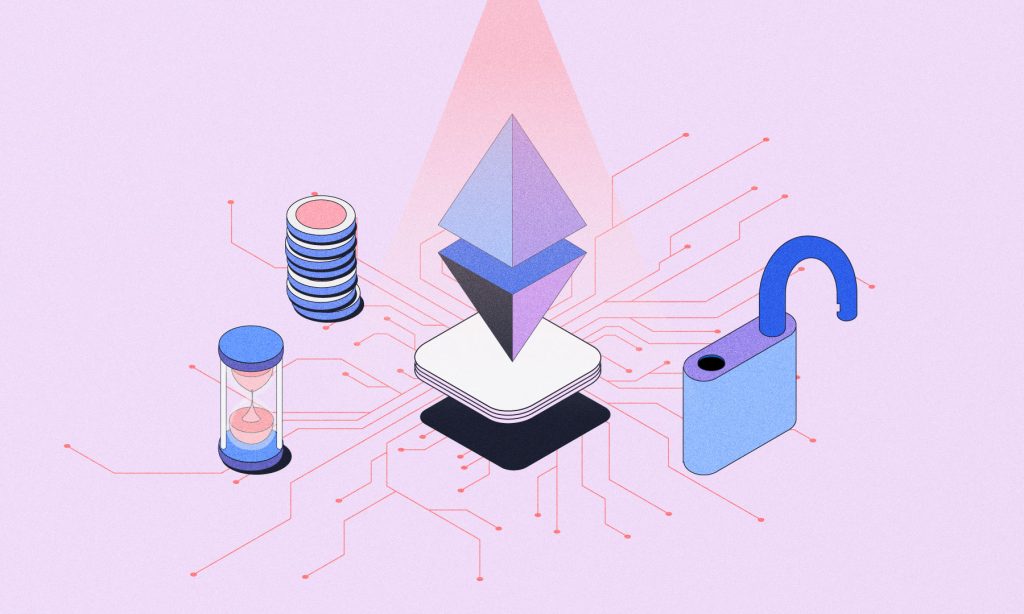Ethereum’s stakers have had a long wait. They haven’t been able to withdraw their ETH staked on the network for months. But all that changes soon with the Shapella upgrade formerly the Shanghai upgrade.
The last upgrade—the Merge—took place in September 2022. It introduced the staking mechanism on the Ethereum network. That was huge, but so is Shapella. This time, too, there are a lot of expectations riding on the upgrade.
For Ethereum developers and the community, Shapella is the last key piece in Ethereum’s journey to becoming a fully functional Proof-of-Stake (PoS) blockchain. After this, the developers can focus on other changes, including its longstanding scaling woes.
So, what exactly does this upgrade entail, and how will it affect ETH prices? Let’s talk about that.
When is the Shapella upgrade scheduled to take place?
Ethereum developers announced in a meeting on 1 March 2023 that Shapella would run on the Goerli testnet in two weeks (on 14 March). Thankfully, that went to plan largely. So now, here we are, with the last upgrade on the mainnet (Beacon Chain) due on 12 April 2023.
But to understand this upgrade better, one must understand how the Merge prefaced it.
The Merge and the run-up to the Shapella (Shanghai + Capella) upgrade
To start with, remember that Ethereum initially ran on a Proof-of-Work (PoW) mechanism. That means it was the kind of network that had miners validating ETH transactions through a power-guzzling process. The limitations of such blockchains, including reduced scalability, have been apparent for a while now. This compelled Ethereum to transform into a new PoS blockchain. PoS, which relies on staking to decide who gets to verify the next bunch of transactions, allows the network to scale infinitely. All while consuming 99% less energy!
What’s staking, though? Well, it’s like locking up tokens on the blockchain. So the more tokens you have locked up, the greater your stake in the welfare of the network. That is the idea underlying the validation process in PoS blockchains.
Ethereum co-founder Vitalik Buterin was the first to propose switching to PoS in 2018. The proposal was put to the vote, and in 2020, the Beacon Chain, Ethereum’s PoS chain, saw the light of day. Beacon was a kind of backbone for the new version of Ethereum.
According to the new system, a user had to stake a minimum of 32 ETH on Beacon to become a validator. But why would people volunteer to put coins at stake? And why would they want to validate transactions at all? Because in return, the stakers would receive staking rewards, of course.
As amazing as PoS on Ethereum sounds, there was a catch. In the initial phase, stakers were not allowed to withdraw staked ETH or the rewards. This rule remained unchanged even after Beacon Chain merged with the Ethereum mainnet. (Yes, we’re talking about the Merge upgrade here.) So, although its transition to PoS was completed on 15 September 2023, the ETH remained locked.
As of 28 March 2023, the network has over 17.8 million ETH locked up on its Beacon Chain. That’s where Shanghai + Capella comes into play.
The Shanghai upgrade: What are the changes proposed?
Shanghai introduces a slew of changes to the Ethereum network. It consists of five Ethereum Improvement Proposals (EIPs)—EIP-3651, EIP-3855, EIP-3860, EIP-4895, and EIP-6049.
Of these, EIP-4895 is the most crucial proposal. It is the one that will enable validators to withdraw their staked ETH and rewards. The remaining four EIPs aim to improve user experience and network efficiency. EIP-3651, for example, is likely to help reduce Ethereum’s fees. And EIP-3855 will reduce transaction sizes, making the blockchain lighter. EIP-3860, on the other hand, is a possible fix to a Denial-of-Service attack vector and cap gas fees, while EIP-6049 is a more developer-centric upgrade.
Why is Shanghai now being called Shapella upgrade?
Recently, the developers have referred to the upcoming hard fork as “Shapella” instead of “Shanghai.” But why would they do that? Because the upgrade is essentially taking place in two layers. And the execution layer is the one undergoing the Shanghai upgrade. But the consensus layer upgrade is “Capella.” “Shapella” is thus a combination of the two terms and probably a better name for this upgrade.
What is the Capella upgrade?
The Capella upgrade is best understood when we know how Ethereum works, so let’s start sorting that out.
Since ETH staking went live on the Beacon Chain over two years ago, Ethereum has had two layers—the Execution Layer (EL) and the Consensus Layer (CL). The former layer hosts smart contracts and protocols and is concerned with taking a withdrawal request from the CL and processing it. That is, sending the ETH to the correct address. However the latter overlooks the validation process and facilitates interactions for a full withdrawal.
As mentioned earlier, the Capella upgrade pertains to CL. It will thus help handle two broad types of withdrawals—full and partial.
How will the Shapella upgrade impact Ethereum?
The Shapella upgrade could arguably be the most crucial of the upgrades leading to a PoS transition for Ethereum. But not everyone has been so optimistic about it.
Participants once feared enabling the withdrawal feature would impact the chain’s stability. They believed that large-scale withdrawals would ensue, triggering an outage that would negatively impact the network’s credibility. Thankfully, none of those fears have materialized so far.
As Shapella approaches, it gives stakers some much-needed visibility about their future. This is a positive development that could help to attract more participants, thus increasing the staked ETH. As participants increase, it will further boost network security and adoption.
The impact of the Shapella upgrade on the ETH price
After the merger, ETH supply turned deflationary. That’s a good thing because deflationary tokenomics supports ETH’s price. With Shapella, there may not be much of a price impact. Why so? Let’s try to answer that.
You see, the limited impact of Shapella on ETH’s price has to do with the lack of suspense. The market has had the time to process this upgrade, so knee-jerk reactions are unlikely. However, we may see some ETH supply increases, which may change things.
In the long term, though, the upgrade could positively impact the price as the adoption and the demand for ETH increase. However, there’s no way to be certain about these things, so do enough research and give it some time.
FAQs
Is Shanghai the same as Shapella update?
No, Shanghai and Shapella are not the same; they refer to different upgrades in the Ethereum network.
Shanghai Upgrade: Ethereum’s Shanghai upgrade is also known as the Shapella upgrade. It was a hard fork that occurred on April 12, 2023. This upgrade focused on the execution layer of Ethereum.
Shapella Upgrade: Shapella is a term associated with the Ethereum Improvement Proposal (EIP) 4895, part of the Shanghai upgrade. The Shapella upgrade addressed certain aspects related to Ethereum’s execution layer.
How will Shanghai upgrade affect Ethereum?
The Shanghai upgrade in Ethereum is a significant hard fork that aims to bring about several changes:
Transition to Proof-of-Stake (PoS): The Shanghai upgrade is part of Ethereum’s broader transition from proof-of-work (PoW) to proof-of-stake (PoS) consensus mechanism. This transition is expected to enhance scalability, energy efficiency, and security in the network.
Increased Liquidity and Trading: The changes introduced by the Shanghai upgrade are anticipated to increase liquidity and trading of Ether (ETH), potentially attracting more participants to the Ethereum ecosystem.
Alteration of ETH Economics: The upgrade is considered a crucial step that may permanently alter the economics of Ether. This alteration is expected to have implications for the overall dynamics of the Ethereum blockchain.
What is Shapella upgrade?
The Shapella upgrade is a set of changes to the Ethereum protocol, particularly associated with the Ethereum Shanghai and Capella upgrades. This upgrade enables users to unstake or withdraw their staked Ethereum from staking contracts. Also referred to as the “Shanghai and Capella” upgrades, Shapella marks a significant milestone in Ethereum’s transition from proof-of-work (PoW) to proof-of-stake (PoS) consensus.
Will Shanghai upgrade reduce gas fees?
Yes, the Ethereum Shanghai upgrade is expected to reduce gas fees on the Ethereum network. Investors and users may experience improved network performance and lower gas fees, making transactions more affordable and efficient. This upgrade is part of Ethereum’s transition from proof-of-work (PoW) to proof-of-stake (PoS), enhancing scalability and sustainability.








